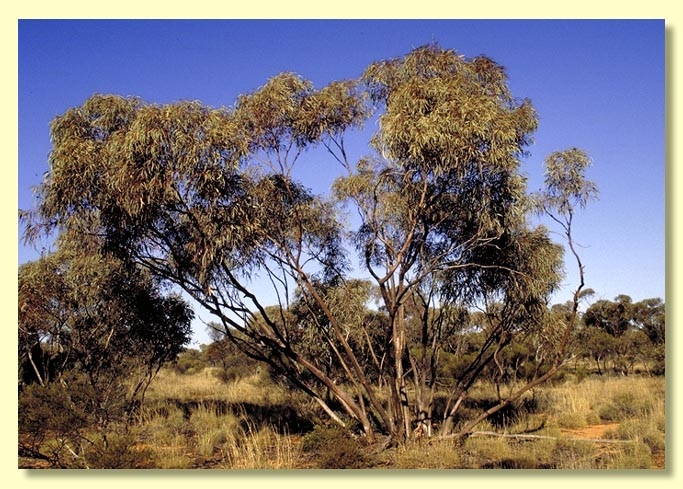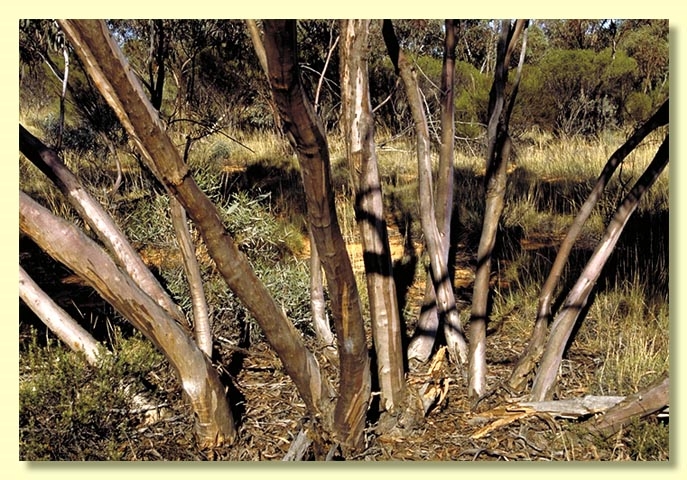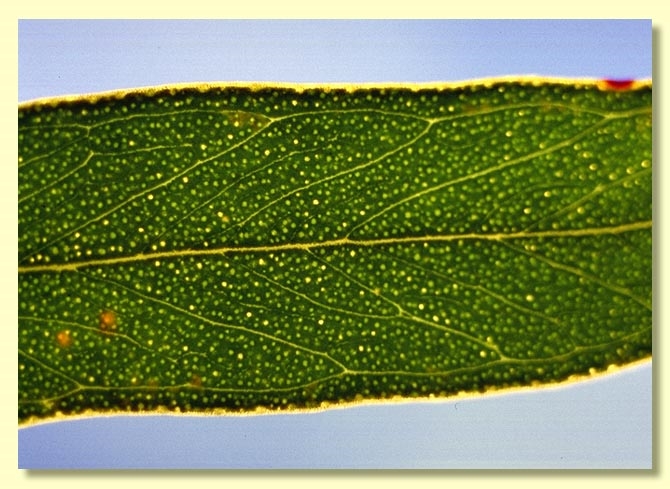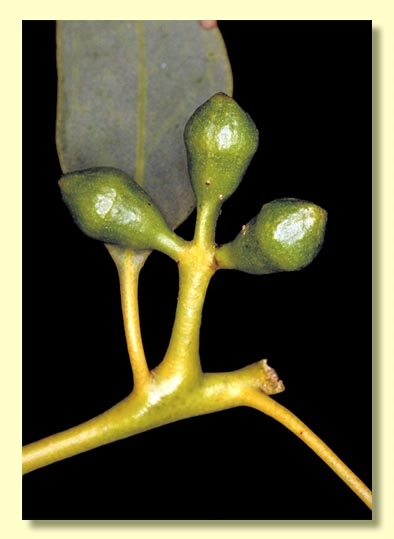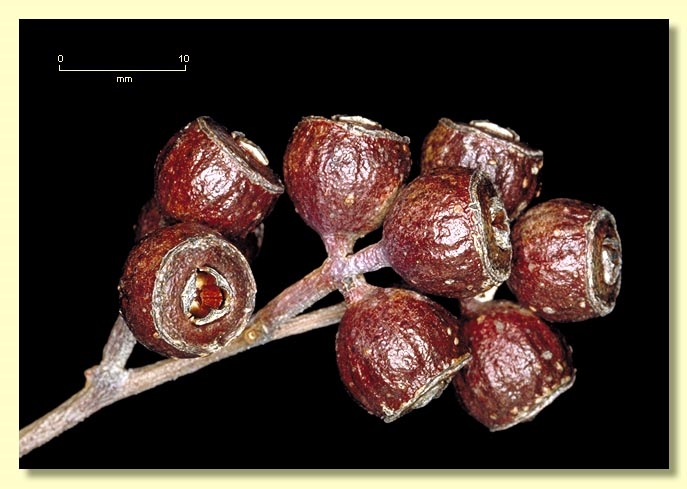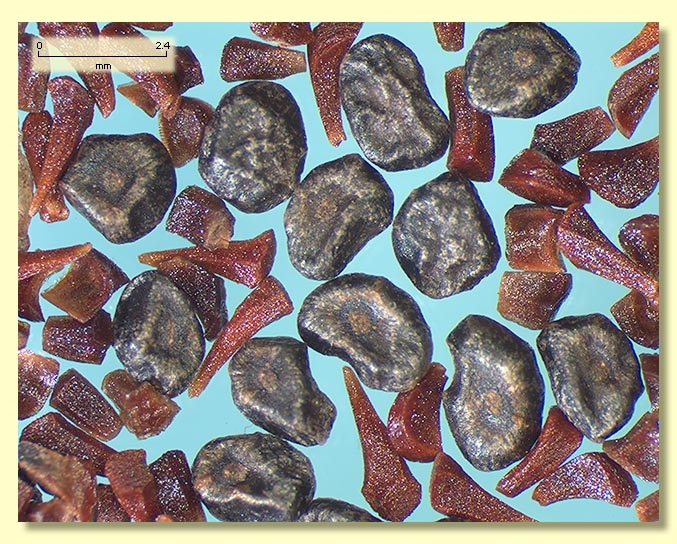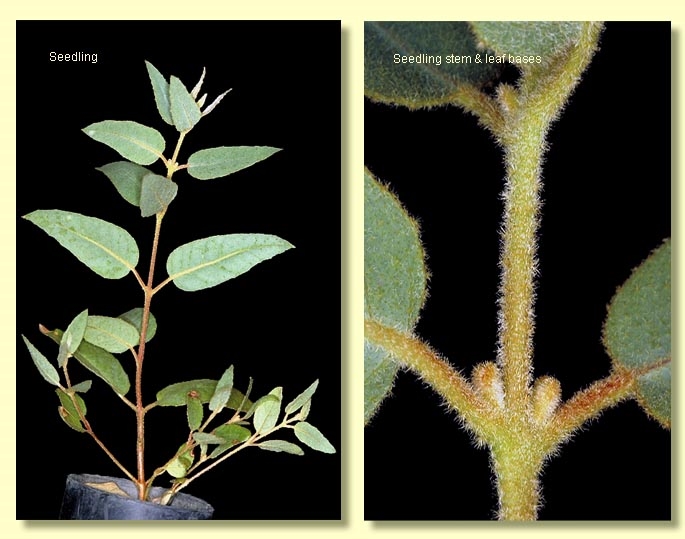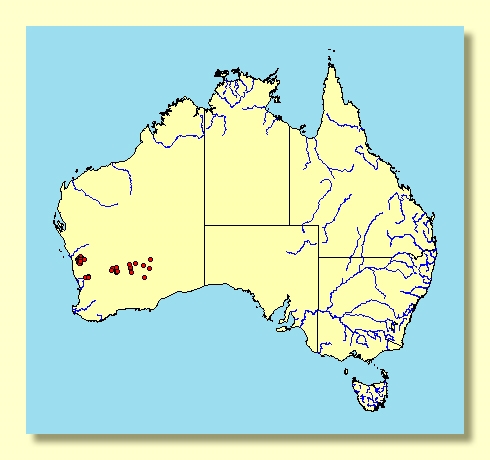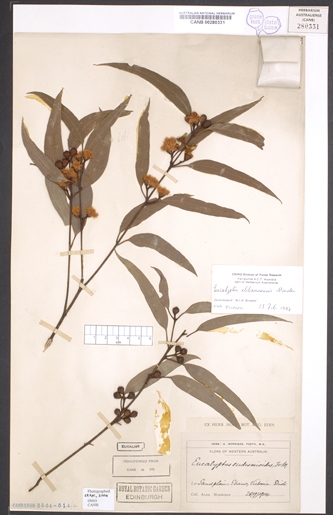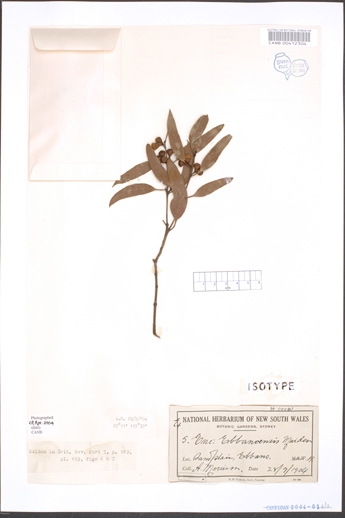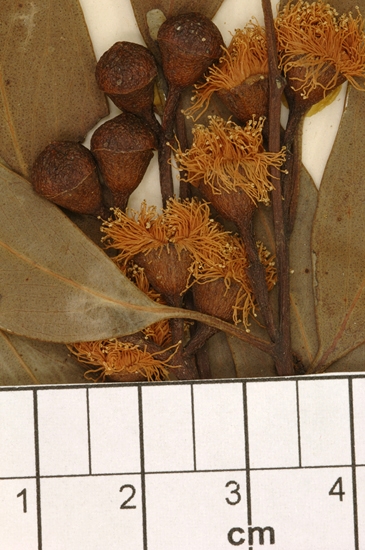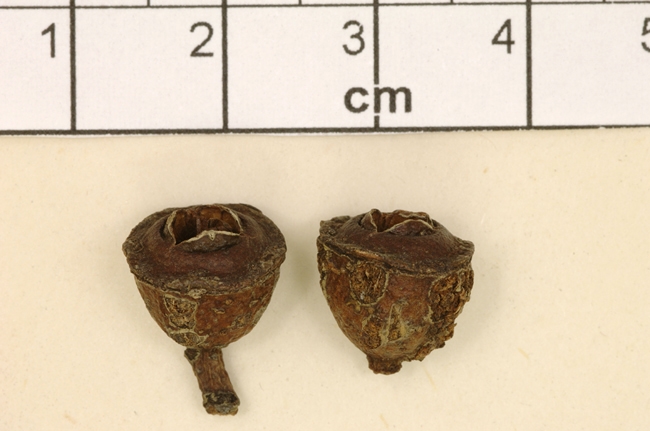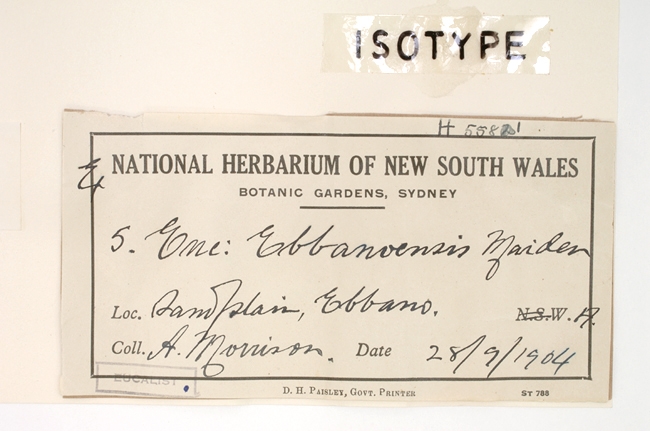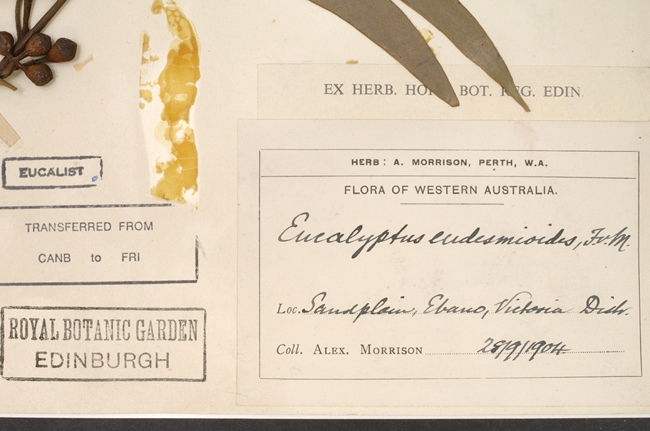Euclid - Online edition
Eucalyptus ebbanoensis subsp. ebbanoensis
Eucalyptus | Eudesmia | Ebbanoenses
Bark usually smooth, grey to grey-brown, sometimes grey over dull pink, larger individuals with a short stocking of light grey to brown flaky rough bark.
Branchlets not glaucous, particularly in the western population, the eastern population inconsistently glaucous; oil glands present in the pith.
Juvenile growth (coppice or field seedlings to 50 cm): stems rounded in cross-section, glaucous or non-glaucous, hairy; juvenile leaves opposite in the early stages, eventually alternate by ca node 13, petiolate, ovate to cordate to lanceolate, 4.5–8(10.5) cm long, 2–4(5) cm wide, base lobed to rounded to tapering, apex acute, dull, grey-green to glaucous, hairy to glabrous.
Adult leaves alternate, rarely opposite to sub-opposite, petioles 0.8–2 cm long; blade lanceolate to falcate, 5.5–12.5 cm long, 0.7–2.2 cm wide, base tapering to petiole, concolorous, dull, grey-green to green, side-veins acute, reticulation sparse, intramarginal vein present, oil glands mostly island.
Inflorescence axillary single, peduncles 0.4–1(1.3) cm long, buds 3 per umbel, pedicels 0.1–0.5 cm long. Mature buds obovoid to pyriform (0.4–0.7 cm long, 0.5–0.7 cm wide), not glaucous, outer perianth whorl minutely sepaline, inner whorl operculate, operculum rounded to conical, sometimes flattened, stamens grouped in four clusters, inflexed, occasionally with the outer stamens more or less erect, anthers oblong, versatile, dorsifixed, dehiscing by longitudinal slits (non-confluent), style short, rarely long, stigma tapered, locules usually 3 or 4, the ovules arranged in 4 distinct vertical rows on the placentae. Flowers whitish.
Fruit pedicellate (pedicels 0.1–0.4 cm long), cup-shaped to almost hemispherical or occasionally campanulate, 0.6–1.1 cm long, 0.8–1.2 cm wide, not glaucous, disc level to ascending, valves 3 or 4, exserted or near the rim.
Seeds dull brown to grey to black, ovoid to cuboid in shape, 2–3 mm long, surface smooth not deeply pitted, hilum ventral.
Cultivated seedlings (measured at node 10): cotyledons reniform; stems round in cross-section, hairy, glaucous to non-glaucous, leaves petiolate, opposite for the first 13 nodes then alternate, ovate, 3.5–8(10) cm long, 1.5–4(5) cm wide, dull green to grey-green to slightly glaucous, margins entire or minutely toothed due to hairs, apex pointed, base lobed to rounded to square to tapering, lamina hairy.
Flowering has been recorded in September, October and November.
Eucalyptus ebbanoensis is a mallee species endemic to Western Australia and of widespread distribution north and east of Perth in the northern wheatbelt to north of Geraldton and east to the western part of the Great Victorian Desert. The bark is usually smooth, sometimes rough at the base on larger individuals; the buds in groups of three, buds obovoid to pyriform, with a rounded to conical, sometimes flattened operculum.
It belongs in Eucalyptus subgenus Eudesmia because of the combination of cotyledons reniform in shape and folded and clasped in the embryo, juvenile leaves usually with stellate hairs, buds with the calyx fused to the corolla and evident as four small teeth at the apex of the bud—within the subgenus Eudesmia, Sections Limbatae and Complanatae have free calyx lobes evident as four small teeth around the midline of the bud—stamens arranged in four bundles, and the presence of oil glands in the pith of the branchlets. Within this taxonomically complex subgenus, E. ebbanoensis is the only species in section Ebbanoenses, distinguished by the almost complete lack of tertiary veining in the adult leaves and ovoid seeds that lack a marginal flange.
There are three published subspecies (two recognised in this edition of EUCLID):
E. ebbanoensis subsp. ebbanoensis
This is the most widespread form which occurs from the northern wheatbelt to the central goldfields to the western edge of the Great Victoria Desert. The leaves are dull and the plants from the western populations lack glaucescence, with those in the eastern population (east of Diemals) sometimes glaucous on the branchlets. This eastern form has been described as E. ebbanoensis subsp. glauciramula (Latin glauci-, glaucous and -ramulus, branchlet, referring to the wax on the branchlets). Field observations have indicated that the glaucescence is not consistent; therefore, we have included this subspecies in the typical form.
E. ebbanoensis subsp. photina
Occurrence much more localised, in the Moresby Range area north and east of Geraldton. The adult leaves are very glossy and the plant is only glaucous in seedling and juvenile phases.
Eucalyptus ebbanoensis subsp. photina: Greek photeinos, shiny, of the adult leaves compared with the dull leaves of the typical form.

